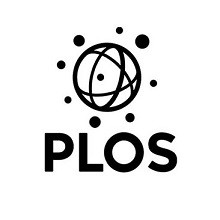
سنجش قطعه قطعه شدن اسپرم DNA و پیامدهای بالینی تولید مثل با کمک پزشکی
چکیده
تفکیک (قطعه قطعه شدن) اسپرم DNA همراه با کاهش نرخهای باروری، کیفیت جنین، نرخهای حاملگی، و افزایش نرخهای سقط جنین بوده است. روشهای متعددی برای تست تفکیک اسپرم DNA وجود دارند مانند ساختار کروماتین اسپرم (SCSA)، تست انتشار کروماتین اسپرم (SCD)، برچسبگذاری و نام مستعار دزوویریدین تری فسفات واسطهگری شدهی دزوناکلئوتیدیل ترانسفراز ترمینال (TUNEL) و الکتروفورز ژل تک سلولی (Comet) وجود دارند. ما یک مرور سیستماتیک و متاتجزیه و تحلیل را برای ارزیابی ارزش سنجش تجزیهی اسپرم DNA در پیشبینی شانس حاملگی ادامهدار با IVS یا ICSI انجام دادیم. از 658 مطالعهی منحصر به فرد، 30 مورد دارای دادههای قابل استخراج بودند و بنابراین در تجزیه و تحلیل شامل شدند. به طور کلی، تستهای تجزیهی اسپرم DNA دارای حساسیت معقول تا خوبی بودند. طیف وسیعی از سایر فاکتورها ممکن است همچنین دارای تاثیر روی پیامد IVS/ICSI باشند، که توسط ویژگی (خاص بودن) محدود تا بسیار کم منعکس میشود. منحنی مشخصهی عملیاتی گیرندهی خلاصهی سلسله مراتبی (HSROC) ساخته شده، یک ظرفیت نسبتا تبعیضآمیز (متمایز) آزمون TUNEL (مساحت زیر منحنی (AUC) 0.71%؛ 95% CI 0.66 to 0.74) و آزمون Comet (AUC 0.73%؛ 95% CI 0.19 to 0.97) را مشخص کرد. SCSA و تست SCD دارای ظرفیت پیشبینی کنندهی ضعیفی بودند. مهمتر از همه، برای آزمون TUNEL، آزمون SCD، و آزمون Comet، متا-رگرسیون، هیچ تفاوتی را در مقدار پیشبینی بین IVF و ICSI نشان نداد. برای SCSA، متا-رگرسیون نشان داد که مقادیر پیشبینی برای IVF و ICSI متفاوت بودند. بررسی حاضر نشان میدهد که تستهای فعلی تجزیهی اسپرم DNA، ظرفیت برای پیشبینی شانس حاملگی در زمینهی MAR را محدود کردهاند. علاوهبراین، تستهای تجزیهی اسپرم DNA دارای تفاوت اندک یا هیچ در مقدار پیشبینی بین IVF و ICSI بودند. در این لحظه، شواهد کافی برای توصیهی استفادهی معمول تستهای تجزیهی اسپرم DNA در زوجهایی که MAR را هم برای پیشبینی حاملگی و هم برای انتخاب درمان متحمل میشوند وجود ندارند. با توجه به محدودیتهای قابل توجه و نقطه ضعف متدلوژیکی و طراحی مطالعات مشمول، ما پژوهشهای بیشتر در زمینهی مقدار پیشبینی تجزیهی اسپرم DNA را برای شانس حاملگی پس از MAR، همچنین در مقایسه با سایر پیشبینی کنندههای حاملگی پس از MAR توصیف میکنیم.
Abstract
Sperm DNA fragmentation has been associated with reduced fertilization rates, embryo quality, pregnancy rates and increased miscarriage rates. Various methods exist to test sperm DNA fragmentation such as the sperm chromatin structure assay (SCSA), the sperm chromatin dispersion (SCD) test, the terminal deoxynucleotidyl transferase mediated deoxyuridine triphosphate nick end labelling (TUNEL) assay and the single cell gel electrophoresis (Comet) assay. We performed a systematic review and meta-analysis to assess the value of measuring sperm DNA fragmentation in predicting chance of ongoing pregnancy with IVF or ICSI. Out of 658 unique studies, 30 had extractable data and were thus included in the meta-analysis. Overall, the sperm DNA fragmentation tests had a reasonable to good sensitivity. A wide variety of other factors may also affect the IVF/ICSI outcome, reflected by limited to very low specificity. The constructed hierarchical summary receiver operating characteristic (HSROC) curve indicated a fair discriminatory capacity of the TUNEL assay (area under the curve (AUC) of 0.71; 95% CI 0.66 to 0.74) and Comet assay (AUC of 0.73; 95% CI 0.19 to 0.97). The SCSA and the SCD test had poor predictive capacity. Importantly, for the TUNEL assay, SCD test and Comet assay, meta-regression showed no differences in predictive value between IVF and ICSI. For the SCSA meta-regression indicated the predictive values for IVF and ICSI were different. The present review suggests that current sperm DNA fragmentation tests have limited capacity to predict the chance of pregnancy in the context of MAR. Furthermore, sperm DNA fragmentation tests have little or no difference in predictive value between IVF and ICSI. At this moment, there is insufficient evidence to recommend the routine use of sperm DNA fragmentation tests in couples undergoing MAR both for the prediction of pregnancy and for the choice of treatment. Given the significant limitations of the evidence and the methodological weakness and design of the included studies, we do urge for further research on the predictive value of sperm DNA fragmentation for the chance of pregnancy after MAR, also in comparison with other predictors of pregnancy after MAR.
چکیده
پیشگفتار
مواد و روشها
استراتژی جستجو و انتخاب
معیارهای واجدیت شرایط
ارزیابی کیفیت
تجزیه و تحلیل آماری
نتایج
جستجوی سیستماتیک، انتخاب و استخراج دادهها
مرور توصیفی
مطالعات انتخاب شده برای متاتجزیه و تحلیل تشخیصی
SCSA
تست SCD
آزمون TUNEL
آزمون Comet
بحث
نتیجهگیریها
Abstract
Introduction
Materials and Methods
Search and selection strategy
Eligibility criteria
Quality assessment
Statistical analysis
Results
Systematic search, selection and data extraction
Descriptive review
Studies selected for diagnostic meta-analysis
SCSA
SCD test
TUNEL assay
Comet assay
Discussion
Conclusions
- ترجمه فارسی مقاله با فرمت ورد (word) با قابلیت ویرایش، بدون آرم سایت ای ترجمه
- ترجمه فارسی مقاله با فرمت pdf، بدون آرم سایت ای ترجمه
